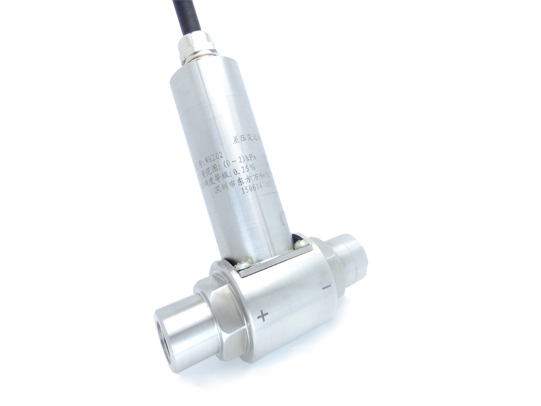


Wet/Wet Differential Pressure Sensor
Differential pressure measurement is the difference in
pressure between two points in a system. For filtration
applications, the upstream side [A] is positioned before
the filter [B], whereas the downstream side [C] is after
the filter. A differential pressure sensor can be used to
monitor the cleanliness of a filter in either liquid or gas
applications.
- Overview
- Features
- Application
- Technical
- Guide
?The WH202 differential pressure (DP) transducer can measure line pressures up
contamination risk. The low strain level on the diaphragm results in accurate,
repeatable measurements. The WH202 can be used to measure differential pressure
across a filter, monitor level in a sealed or vented tank, or calculate flow across an
orifice plate.
With its digital compensation, this series offers excellent linearity and performance over
temperature. The electronics now offer a fail safe condition on the output signal. If the
transducer were to experience a fault condition, the transducer can be programmed to
rail the output signal to 10% below the minimum or 10% above maximum output signal
to notify the user of an issue and protect the system from undesirable conditions. The
WH202 also offers excellent flexibility in its configuration, allowing for a variety of
sensor materials and pressure ports.
to 5,000 PSI with a turndown ratio of 15 to 1.
The WH202 contains no silicone oil, O-rings, or welds. This MEMS pressure sensor
technology completely isolates the media to the pressure ports, thus eliminatingcontamination risk. The low strain level on the diaphragm results in accurate,
repeatable measurements. The WH202 can be used to measure differential pressure
across a filter, monitor level in a sealed or vented tank, or calculate flow across an
orifice plate.
With its digital compensation, this series offers excellent linearity and performance over
temperature. The electronics now offer a fail safe condition on the output signal. If the
transducer were to experience a fault condition, the transducer can be programmed to
rail the output signal to 10% below the minimum or 10% above maximum output signal
to notify the user of an issue and protect the system from undesirable conditions. The
WH202 also offers excellent flexibility in its configuration, allowing for a variety of
sensor materials and pressure ports.





